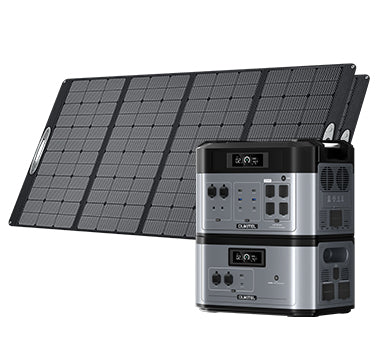Portable Power Station for DIY Studios: Enhance Reliability & Flexibility!
Navigation
- Introduction
- Benefits of a Portable Power Station for a DIY Studio
- Types of Portable Power Stations
- Choosing the Right Portable Power Station for a DIY Studio
- Examples of Successful DIY Studios Using Portable Power Stations
- Conclusion
Introduction

A reliable source of power is essential for any DIY studio, from photography and videography to audio production and creative work. However, reliance on wall outlets and public utilities leaves business owners vulnerable to interruptions from power fluctuations, surges, and outages. A portable power station provides a mobile backup power solution that greatly enhances a DIY studio's professionalism, reliability, and reputation.
Benefits of a Portable Power Station for a DIY Studio
- Increased portability and flexibility: A portable power station allows you to power devices anywhere in or outside your studio. You can relocate easily and take your power source, reducing dependency on wall outlets.
- Ability to power a wider range of equipment: Portable power stations come with multiple AC outlets, USB ports, and DC ports, allowing you to power a greater variety of devices simultaneously. This includes lights, cameras, audio equipment, phones, laptops, and more.
- Maintaining a consistent workflow and preventing interruptions: Having a reliable backup power means your equipment will stay running during power outages or brownouts, minimizing downtime and interruptions to your projects and workflow.
- Increased professionalism and reliability for clients: Relying on a portable power station lets you assure clients that their projects will stay on schedule and that you have a solution to potential power issues. This helps build trust and enhances your studio's credibility.
Types of Portable Power Stations
There are several main types of portable power stations based on their power capacity, battery type, and features:
Lithium Battery Power Stations: Higher capacity units with LFP battery options. Have around 500-5000 watts of power. Provide longer runtimes and more power for higher-wattage devices.
Solar Power Stations: Similar to lithium battery stations, but can be recharged using solar panels. Used for off-grid applications where AC power is not available.
Generator Power Stations: Combine a portable power station with a small gas or diesel generator. Provide the highest capacities from 2000-15000 watts. Used for uninterrupted power for days.
Within each type, pros and cons include factors like price, weight, runtime, convenience, noise levels, and recharging options. Larger capacity stations tend to be heavier, pricier, and more suited for commercial or industrial use.
Choosing the Right Portable Power Station for a DIY Studio
- Assessing power needs based on equipment and usage: Make a list of all the devices you need to power, along with their wattage ratings. Add a buffer for future growth. This will determine the minimum capacity you require.
- Considering budget and other factors: Portable power stations can range in price from a few hundred dollars to several thousand. Balance cost with the features and capacity you need.
- Researching and comparing different brands and models: Research top brands and the specifications of different models within your budget. Compare features like outputs, battery type, capacity, charging speeds, and durability.
- Testing units: If possible, try out units in person. Test outlets by plugging in your equipment to ensure compatibility and performance.
Examples of Successful DIY Studios Using Portable Power Stations

A photographer's studio upgraded from a 1,000-watt to a 3,000-watt unit to reliably power additional lighting and camera equipment. This allowed the photographer to take on larger commercial shoots.
A filmmaker's DIY studio uses a 5,000-watt solar power station to keep equipment running away from grid power during outdoor shoots. The station provides enough power for multiple cameras, lighting, and audio equipment.
Conclusion
In summary, a portable power station can enhance almost every aspect of operating a DIY studio.
It allows businesses to scale and take on more clients confidently, knowing their power needs are covered anywhere, anytime. Combined with effective marketing, a reliable power source can help propel a DIY studio to the next level of success.







































 Oukitel Flashlight
Oukitel Flashlight Oukitel Solar
Extension Cable
Oukitel Solar
Extension Cable

















Leave a comment